By Christopher Miskimon
The German crewmen occupied the various stations in their tank as they approached the American roadblock ahead. It was 2100 hours on Christmas Eve, 1944, just outside the town of Manhay, Luxembourg, which was occupied by elements three different U.S. divisions. The Nazi offensive into the Ardennes, which later came to be known as the Battle of the Bulge, was well under way, and this column of the 2nd SS Panzer Division had been given the objective of seizing the town from its American defenders.
The moon overhead shone brightly in a clear sky, reflecting on the blanket of snow that covered the ground and providing good nighttime visibility. As the lead tank of the column got ever closer to the roadblock, tension no doubt mounted; the American tankers and infantrymen must have strained to see who was approaching their position—friend or foe. With each passing second, the crew of the leading German tank, out front and vulnerable, must have feared the calls of warning and bursts of tank and bazooka fire that would turn their machine into a fiery coffin.
No shouts of “Open Fire!” or “Krauts!” rang out, however. Instead, the lead tank moved up to the roadblock without a shot being fired. The American sentries were not lazy or incompetent; they had been fooled. The German tank crew was driving an American tank, a captured M-4 Sherman, its silhouette easily discernable from that of an enemy tank in the bright moonlight. Behind this Sherman, the rest of the SS detachment sprang to the attack, both infantry and German tankers in their own panzers. Surprise was complete.
Muzzle flashes and screams pierced the darkness; men who should have been singing Christmas carols at home with their loved ones were instead fighting, killing, and dying in what might have been considered an idyllic winter backdrop. Within minutes, the German infantry spread out and used their Panzerschreck and Panzerfaust antitank weapons to destroy four of the defending Shermans and disable two more.
Flush with success, the Germans decided to try their ruse again on the next roadblock, which lay about a thousand yards farther down the road into Manhay. This roadblock was well manned by 10 more American Shermans and an understrength company of infantry. The defenders were dug in with their tanks in hull-down firing positions, leaving only the turrets exposed to an attacker.
Once again the SS troops put their captured Sherman in the lead. The troops at the second roadblock would have heard the gunfire. Presumably, the Germans hoped the Americans would observe one of their own tanks approaching and believe the occupants were retreating comrades. Their luck held, and no fire greeted the SS-crewed Sherman. The rest of the Nazi column quickly went into action, lighting flares to blind the crews of the American tanks and opening fire. All of the American tanks were lost in the ensuing firefight. An hour and a half after the attack began, the Germans were in Manhay, where five more tanks fell to them.
Captured Tanks: Solving Problems in Supply and Production
It was an ingenious use for a captured tank, and one that paid off for the German attackers. In addition to using such vehicles in subterfuges, the Wehrmacht made much use of captured armor on all fronts during World War II. A popular image of the German Army is that of an armored juggernaut using its superior tanks, like the giant Tigers and Panthers, to either sweep all before it or to fight bitter and costly defensive battles against overwhelming odds.

While one can certainly find numerous examples of just such actions, this was not always the case. At times, the German Army suffered equipment shortages like most military forces. For example, after the fall of France in 1940, the Wehrmacht increased the number of its armored divisions. Since there were not enough tanks to fully equip the new units, the existing tanks were spread out among them, reducing the total number of tanks per division.
In the early part of the war, German industry was not yet up to its full wartime production capacity. So, the Army used a number of methods to make up for numerical deficiencies. One prewar innovation was to use the large numbers of Czechoslovakian tanks that had fallen into their possession when that nation came under the Nazi yoke in 1938. As nations fell to the German onslaught, another method was to use tanks from conquered nations and still-active enemies. As the war continued, so did German improvisation in the use of captured Allied tanks.
After the French surrender in June 1940, the Wehrmacht found itself not only in possession of large numbers of French tanks, such as the Somua S35 and Char 1 bis, but also of the French production facilities and ammunition factories needed to sustain these vehicles. These early French designs were equivalent to the German ones then in use; it had been more a matter of their tactical employment than their quality that had hastened French defeat. So, the Germans retained these vehicles, using them for the security of airfields and railroads and for driver training in Western Europe.
Later, when these tanks became obsolete for battlefield use, their turrets were removed and placed in bunkers and pillboxes, while the chassis found use as artillery tractors and carriers for self-propelled guns. Very small numbers of seized French tanks saw combat. Just a few were used in Russia and a few in the Balkans. After their usefulness in direct combat was over, these tanks were employed against partisans, who generally lacked antitank weapons.
Captured British Tanks in the Afrika Korps
British tanks were also captured during the fighting in France. Since Germany was still fighting Britain, some captured armor was put to use outside of combat. Examples of these captured tanks were sent back to Germany to the Army Weapons Office, a practice that would continue with captured armor from all fronts and enemies during the course of the war. There, various testing would be conducted, and tanks would be evaluated for their fighting capability. Once these evaluations were done, the tanks would be tested against various German antitank weapons to see which would be most effective. Firing tables were created showing these results along with each vehicle’s vulnerable points.
Since there was no ready source of ammunition or spare parts for British tanks, some were converted to tractors or training vehicles. As vehicles broke down, some were stripped for parts to keep others running. The final destination would often be the target range, where the hulks were used for target practice and to train infantry on close-in tank killing. A very small number of captured British cruiser tanks saw action in Russia, and a handful of Churchill tanks captured at Dieppe were salvaged, tested, and then used until they, too, ended up on the firing range.
For the Afrika Korps fighting in the North African desert, however, captured tanks were put to frontline use as often as possible. German forces often had difficulties receiving adequate resupply. Replacement tanks had to be shipped across the Mediterranean, something the Royal Navy and Air Force tried hard to prevent. Also, the fighting in Russia often took priority over the fighting in the desert, leading to shortages of all kinds for the Afrika Korps, including tanks. Captured British tanks were used to fill the gaps. While British tanks are often viewed as inferior to their German counterparts, it should be noted that in the early period of the war the qualitative differences were usually not so dramatic. One must also consider that when faced with the need, even a “bad” tank is much better than no tank at all.
Both the 15th and 21st Panzer Divisions of the Afrika Korps formed provisional units of captured English armor in 1941. The size of these units varied widely from time to time, since new vehicles were acquired and those in use broke down, were cannibalized for parts, or were lost in combat. By February 1942, a consolidated captured tank unit was created for the Afrika Korps as a whole. It remained in service until the end of the fighting in Africa, since newly captured vehicles were funneled to it as others were lost. A maximum of 18 tanks comprised the unit, though numbers constantly fluctuated. Various models of British tanks served in these units, including Matildas, Valentines, and Crusaders. Only a very few examples of American tanks in British service were taken.
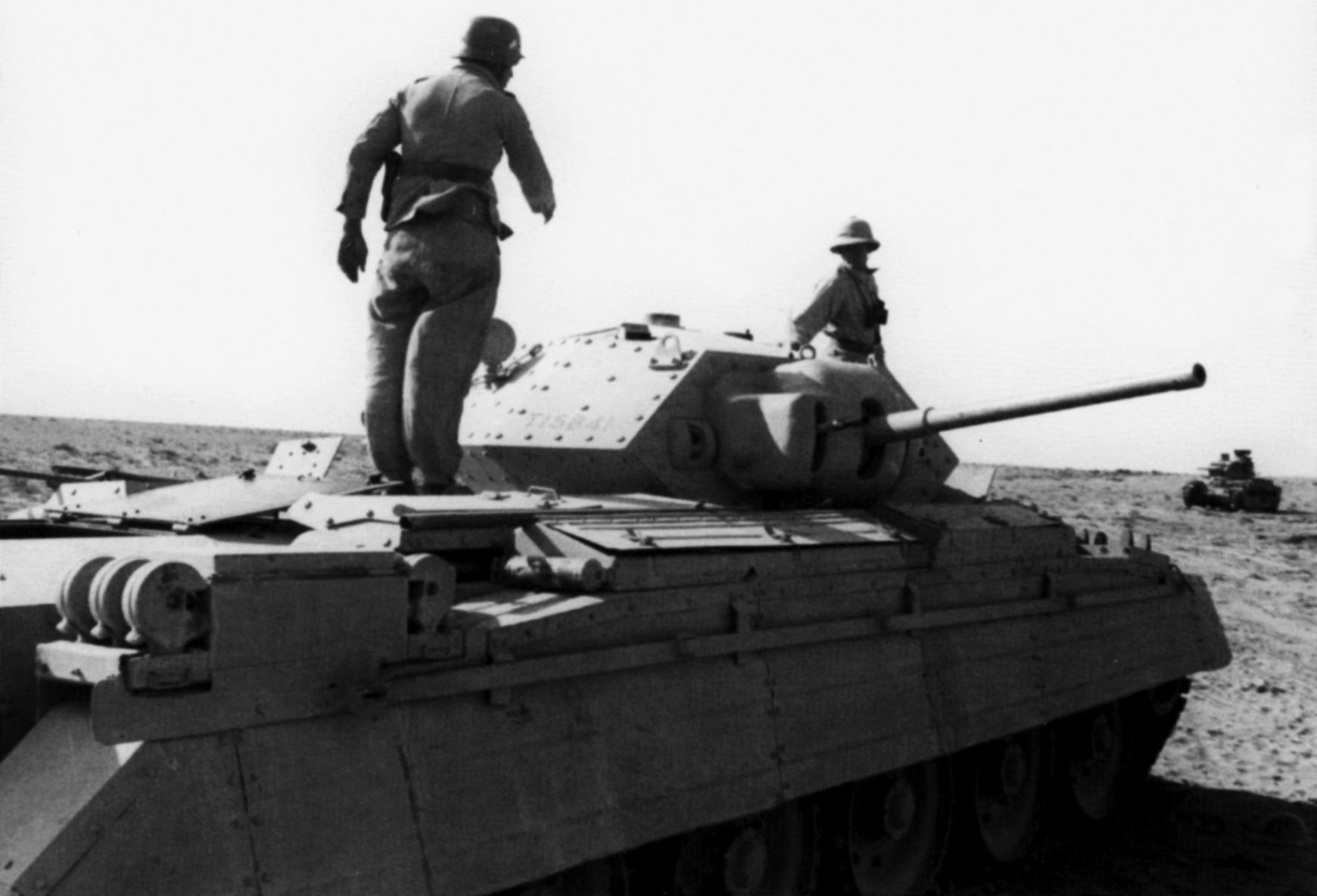
“War Daddy II”
American forces landed in Africa in November 1942, joined the fighting, and before long some of their tanks fell into German hands as well. By this stage of the North African fighting, it was apparent the Wehrmacht’s war in the desert was nearing its end. Knowing time was short, every effort was made to capture examples of American tanks for return to Germany and the Army Weapons Office so testing could be carried out.
It was in Tunisia that the first Sherman tanks were captured. Here begins the story of the hapless M-4A1 Sherman named “War Daddy II.” Panzerabteilung 501 captured the tank from the First Armored Division on February 22, 1943, near Sbeitla, Tunisia. From there, its captors drove the tank to Tunis, a 350-kilometer journey that took four and a half days. Once there, “War Daddy II” was placed aboard a ship and transported to the Army Weapons Office. There, the tank, which displayed serial number WH 058941, was put through testing. The thickness of the armor in millimeters and its slope in degrees were determined. Photographs exist of this tank, its name still painted on its hull, both on display and being tested alongside German armor. During the course of the war, more captured Shermans joined various other types of seized tanks at testing centers at Berka and Kummersdorf. After testing, some tanks were placed on display in army museums at the test sites. In the last days of the war, those few tanks that still ran were pressed into battle in ad hoc units.
The Allied landings in Normandy intensified the European fighting, and naturally more Shermans found their way into German hands. Four German divisions are known to have formed captured tank units with numbers of Shermans. The 10th SS Panzer Division, for example, had a separate unit of 10 Shermans at one time. Indeed, due to the widespread use of the Sherman by virtually all the Allied nations, more of them were used by Germany than any other Western tank design.
The reliability of the Sherman was an advantage for its German operators, whose own tanks were often difficult to keep operational. Additionally, since the Germans were usually retreating or on the defensive by this stage of the war, they could not hope to overrun stockpiles of spare parts as they had during the heady days of the invasion of France in 1940.
The 150th Panzer Brigade, formed in November 1944, provides perhaps the greatest example of German ingenuity in the use of captured tanks on the Western Front. This is the unit which, during the Battle of the Bulge, infiltrated American lines in order to misdirect, confuse, and sabotage Allied units. Equipped with 10 Shermans and as many other captured American vehicles as could be gathered, the 150th was rounded out with German vehicles specially disguised to resemble American counterparts. Sheet metal added to a Panther could, for example, change its silhouette to resemble a U.S. tank destroyer. The 150th did achieve some success in sowing confusion, though its contribution to the overall German campaign was minimal.
Repairing Captured Armor
Germany’s war in the East against the Soviet Union also saw wide use of captured tanks. Indeed, after observing how many tanks had been taken during the fall of France and the Low Countries, the German high command issued orders for the gathering of captured Russian tanks in July 1941, only weeks after the beginning of the invasion. The speed of the German advance during the early stages of their offensive resulted in the capture of vast numbers of Soviet troops and large amounts of tanks and equipment. The Germans intended to turn these tanks against their former owners as quickly as possible.
Initial hopes for the fast turnaround of these vehicles proved futile, however. The rapid pace of the advance meant increased wear and tear on German armor, and these increased maintenance requirements taxed German repair assets to the limit. There was little time to spare to refurbish Soviet tanks for duty, and most seized tanks needed repair to some degree. This was because the Soviets, while having built and issued tanks by the thousands, had done a rather poor job distributing spare parts and sufficient ammunition, both vital to the operations of armored vehicles.

In the early days of the war on the Eastern Front, Soviet units were often poorly supplied, so broken-down tanks could not be repaired and often had to be abandoned virtually intact. These tanks were captured by the advancing Germans but still needed repair. Retreating Soviet troops destroyed stocks of parts when they could, and sometimes captured tanks were stripped for parts by the German units that seized them. Even though thousands of Soviet tanks of all types had been destroyed, abandoned, or captured, only about 100 were in German service by October 1941.
This number included light tanks such as the BT-7 and T-26, both armed with a 45mm cannon. They stood in for German tanks for a short time until they too were relegated to serving as artillery tractors and ammunition carriers. The Wehrmacht still used large numbers of horses in these roles, so the addition of mechanized transport would have been welcome. Due to the large numbers of Lend-Lease tanks shipped to the Soviets, there were even examples of American M-3A3 and M-4 medium tanks captured on the Eastern Front and put to use. A single Matilda ended its days as a tractor, towing artillery pieces through the thick mud of the Russian steppes.
The T-34 in German Hands
None of these tanks, however, could possibly have been as welcome in German use as the medium T-34 and heavy KV-1. Both tanks shocked the Germans when they first entered combat in late 1941, since they were equal to or better than any German tank then in service. Both were armed with 76mm guns compared to the smaller 37mm and 50mm guns most of the Panzers carried. The T-34’s armor was well sloped to deflect incoming shot, while the KV-1 boasted armor up to 75mm thick, later increased to 130mm. Only the larger German guns had a chance to stop them. Thus, it was no surprise that they put as many as they could into their own service. There was even discussion among the German high command of directly copying the T-34 and putting it into production. Eventually, it was decided to design a new tank, which resulted in the development of the Mark V Panther, arguably the best medium tank of the war. The features of the T-34 figured prominently in the design of the Panther.
Such priority was given to the acquisition of the T-34 that factories were set up to refurbish captured vehicles. A facility in Riga, a Daimler-Benz factory in Marienfelde, and a plant in Gorlitz all turned out T-34s. When the Germans retook Kharkov in early 1943, the SS seized a factory site exclusively for rebuilding captured T-34 tanks. The vehicles were to be disassembled and rebuilt. Tanks and their parts were numbered to assure compatibility. T-34s turned out there were used to form captured tanks units in the 2nd SS Panzer Division “Das Reich.”
As the war in the East turned against Germany, the Wehrmacht was pushed steadily back. While on the defensive, few opportunities occurred for the capture of Soviet tanks such as the improved T-34/85, so named for its long-barreled 85mm cannon. At least three were captured in 1944, though, and used in the fighting in East Prussia by the 252nd Infantry Division and near Warsaw by the 5th SS Panzer Division “Wiking.” These were among the last captured Soviet tanks to see service in the German Army.
Filling a Supply Gap
It would be a gross exaggeration to say that captured tanks used by German forces had any real or lasting impact on the course of the war. At best, they filled gaps and plugged holes in the order of battle as domestic production was insufficient. Still, the use of captured armor by a regime known for its ideology of racial superiority showed a flexibility and capacity for improvisation on the part of the German soldier.
Christopher Miskimon served in the U.S. Army in both the infantry and artillery. He writes from Denver, Colorado.

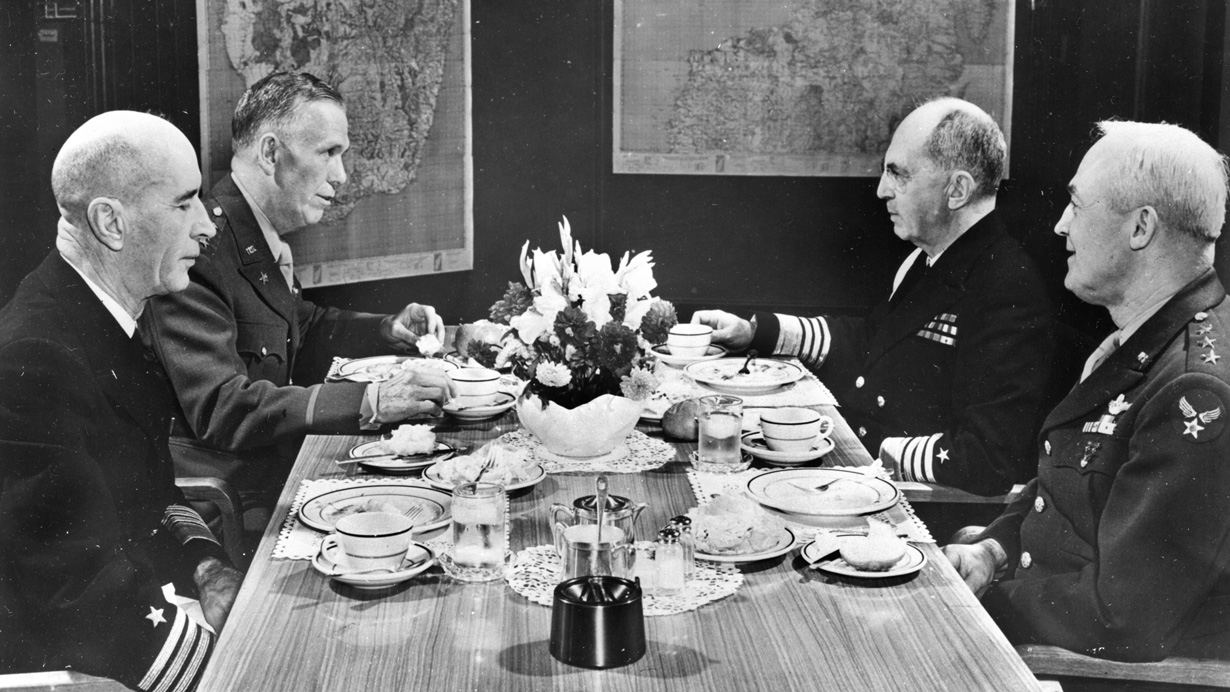
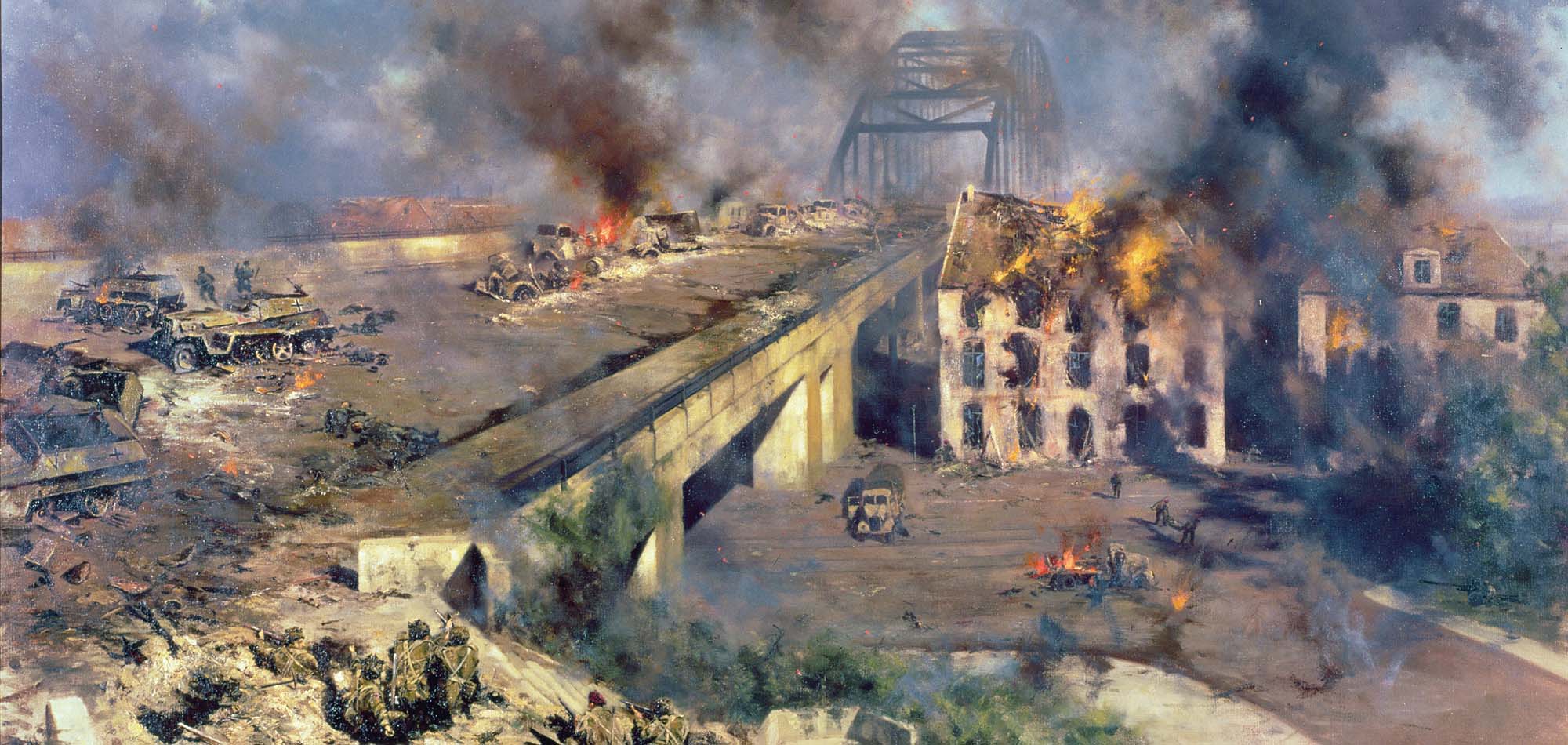

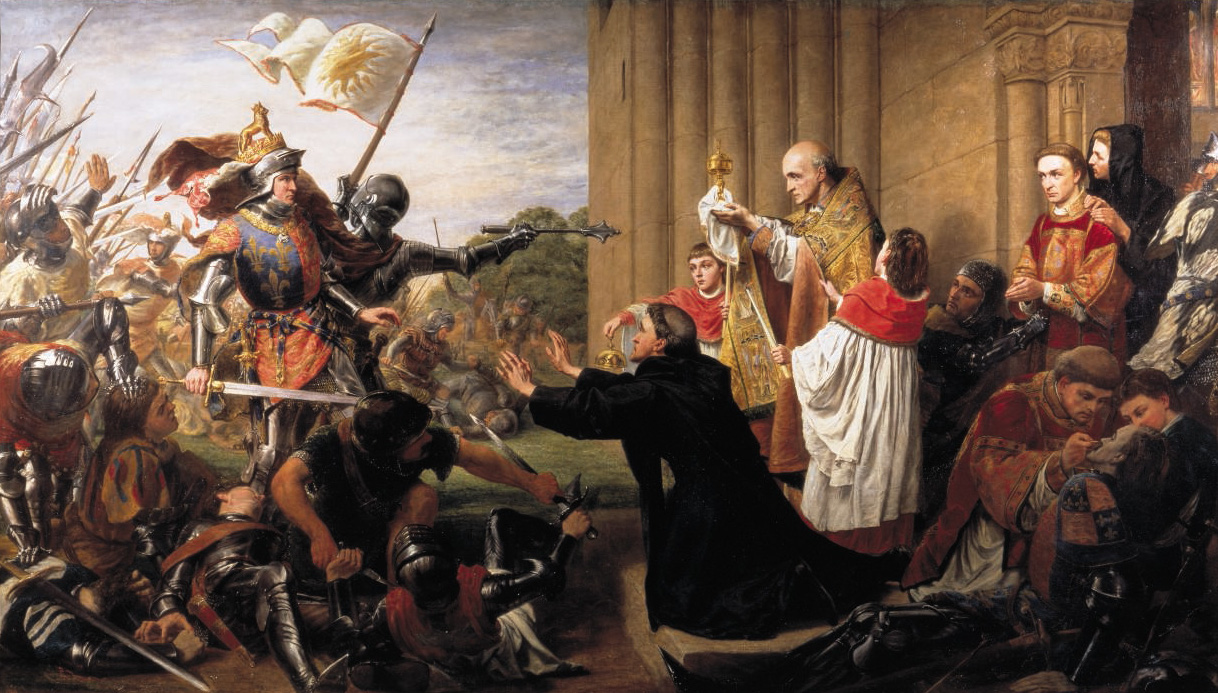
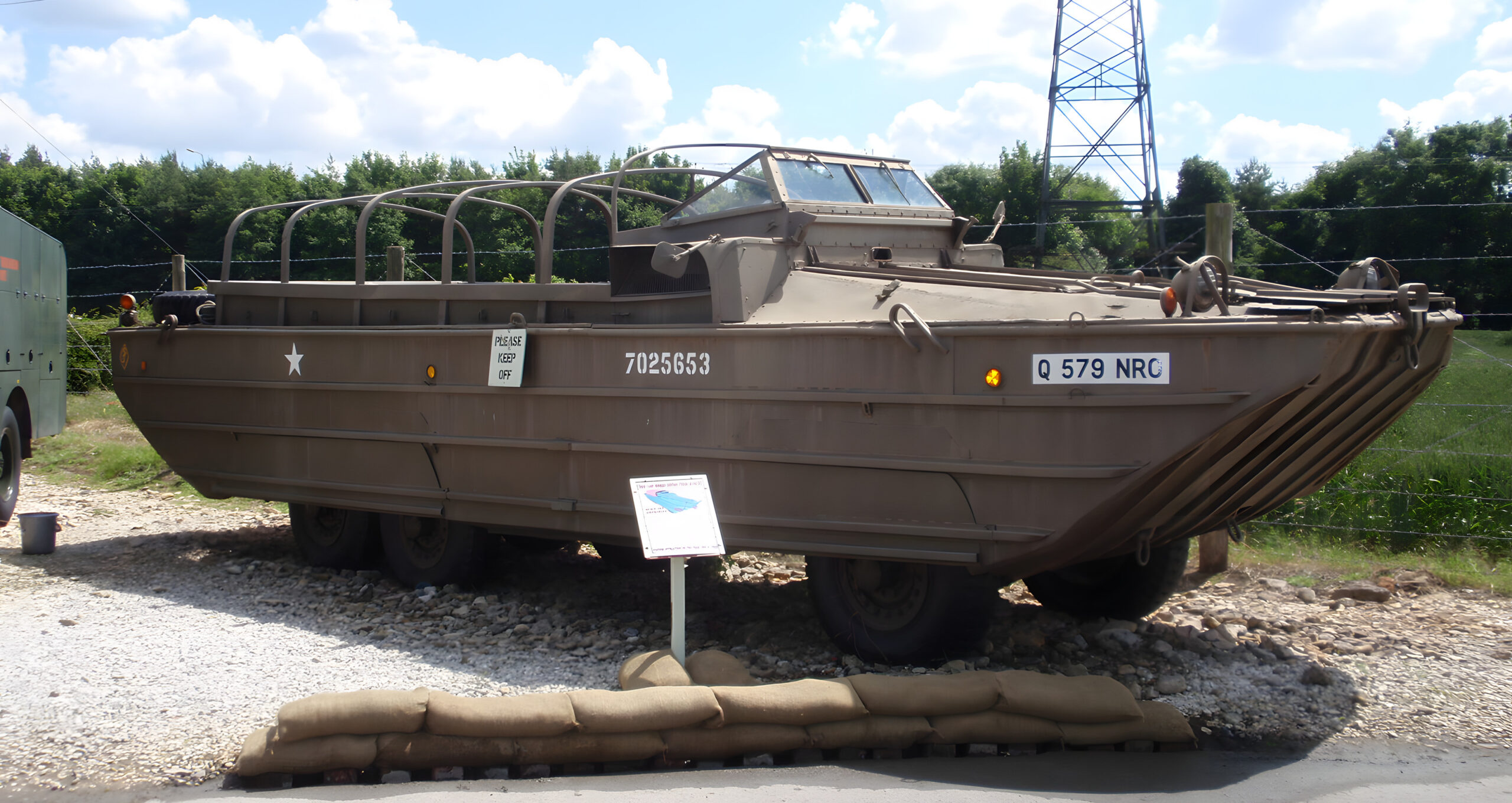
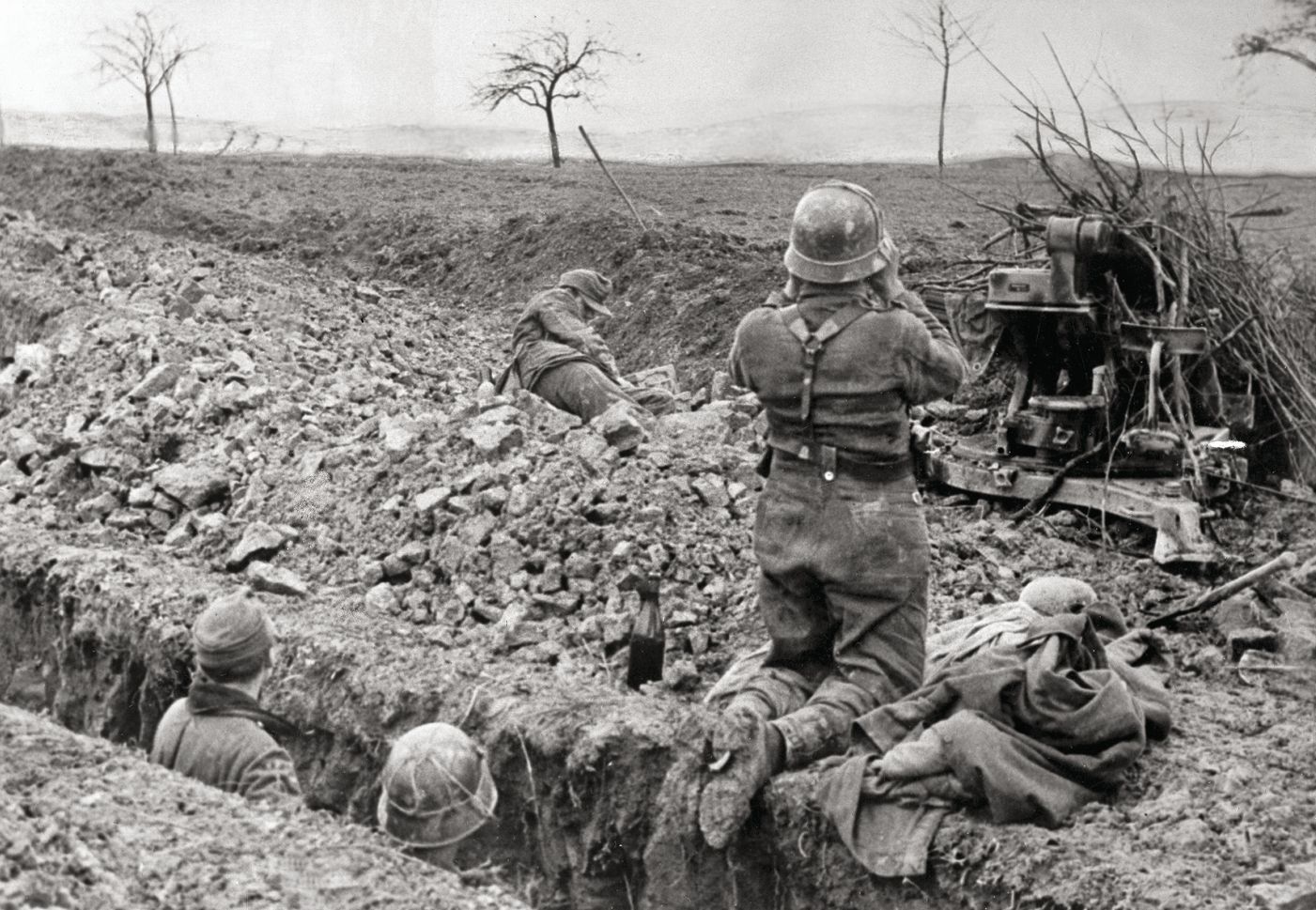
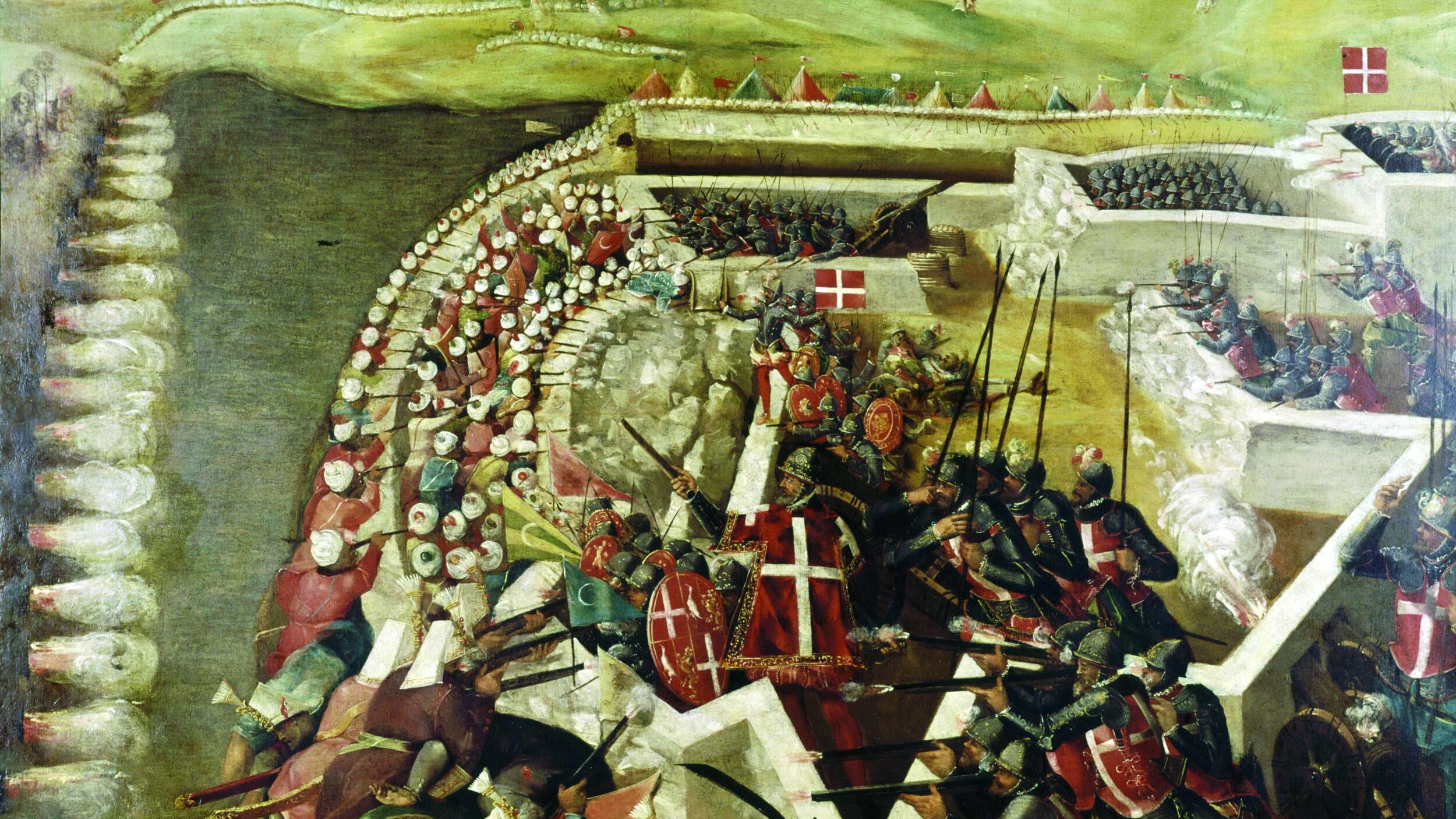
This article brings to mind the billions of dollars’ worth of arms left behind in Afghanistan.
Awfully considerate of to so generously equip our enemies.